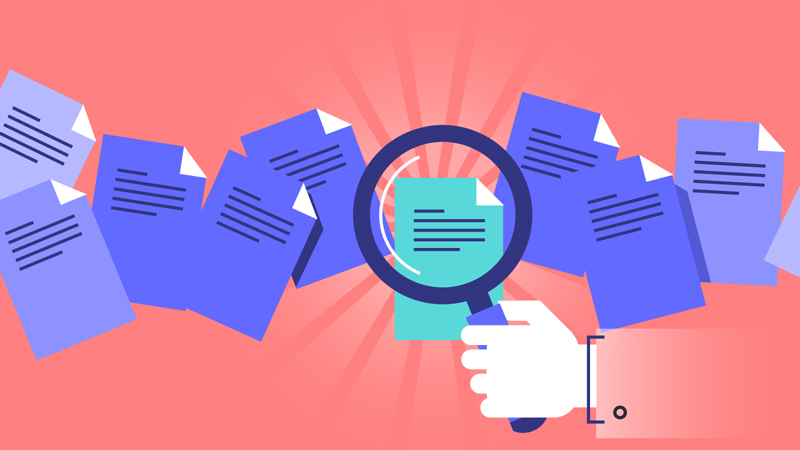You are viewing the article What is control procedure? What kind of control procedures? at Lassho.edu.vn you can quickly access the necessary information in the table of contents of the article below.
Control procedures are a very important and common activity in daily economic life. Understanding the knowledge surrounding this activity will help you prepare better. Therefore, lassho.edu.vn invites you to follow the article about control procedures as well as types of control procedures in the article below.
What is control procedure? What kind of control procedures?
According to Vietnamese Auditing Standard VSA 400, control procedures are defined as: “Control procedures are the rules and procedures established and directed by management within the entity to achieve specific management objectives “.
 There are two main types of control procedures, Direct Controls and General Controls
There are two main types of control procedures, Direct Controls and General Controls
Currently, there are two main types of control procedures:
Direct control : Processes and procedures that directly respond to a detailed level of control objectives, including:
– Control and protect assets and information: Including control measures to ensure the safety of assets and information of the unit.
Management control: Controlling individual activities conducted by employees who are independent of the person performing the activity.
– Processing control: Control to ensure that the recorded economic transactions actually occur and are properly handled and recorded in the accounting books.
General control : is the process of controlling many different systems and jobs (usually with the use of computer systems in accounting).
Internal control in the enterprise
Internal controls are methods and policies designed to prevent fraud, reduce errors, encourage operational efficiency, and to achieve compliance with established policies and procedures.
Objectives and tasks of internal control activities
Internal control is directed towards the following objectives and tasks:
– Compliance with processes and policies, which are part of the company’s internal control system.
– Complying with accounting policies and procedures as well as evaluating the accuracy of financial and management reports.
 It is essential to evaluate the accuracy of financial statements and management reports
It is essential to evaluate the accuracy of financial statements and management reports
– Identify risks, problems and sources of inefficiencies and develop plans to mitigate these.
– Internal audit reports directly to the General Director or the Board of Directors. Therefore, with an effective internal audit, the company’s internal control system will be continuously checked and perfected.
Internal control system in the enterprise
 Internal control system includes 8 steps
Internal control system includes 8 steps
The internal control system in an enterprise includes the following steps:
– Authorization and approval.
– Preformatting.
– Abnormal report.
– Property protection.
– No part-time job.
– Use targets.
– Compare.
– Check and follow up.
How to effectively control internal
For good internal control, enterprises (DN) need:
– Enterprises regularly update important information for the leadership and competent people.
– The enterprise’s communication system ensures that employees at all levels can understand and understand the organization’s rules and regulations, ensure that information is provided promptly and accurately to the competent authorities. rights .
 Good internal control is something that businesses always focus on
Good internal control is something that businesses always focus on
– Enterprises have set up hot information channels, allowing employees to report unusual behaviors and events that are likely to cause damage to the business .
– The enterprise has installed a data protection system to prevent unauthorized access and access.
– Enterprises have developed programs and plans to prevent and control natural disasters, hazards or plans to respond to incidents of data loss.
Benefits of a strong internal control system
A strong internal control system will bring the following benefits to the business:
– Ensure the accuracy of the company’s accounting figures and financial statements.
– Reduce the risk of fraud or theft to the company by third parties or its employees.
 A strong internal control system will bring many benefits to the business
A strong internal control system will bring many benefits to the business
– Reduce the risk of unintentional employee mistakes that could harm the company.
– Reduce the risk of non-compliance with company policies and business processes.
– Prevent unnecessary exposure to risks due to inadequate risk management.
Key factors for successful implementation of internal controls
The successful implementation of internal controls requires several elements:
– A cultural environment that emphasizes integrity, ethical values and clear division of responsibilities.
– Operational procedures and internal control procedures are clearly defined in writing and widely communicated within the company.
– Risk activities are clearly segregated between different employees.
– All transactions must be done with proper authorization.
 All employees must comply with the internal control system
All employees must comply with the internal control system
– All employees must comply with the internal control system.
– Control and monitoring responsibilities are clearly separated.
– Periodically conduct independent inspection measures.
– All important transactions must be recorded in writing.
– Periodically check and improve the effectiveness of internal control measures.
Above is all the information you need to know about control procedures as well as types of control procedures. Hope the knowledge that lassho.edu.vn brings will help you in the future. Wish you are happy.
See more:
>> Instructions on the procedure for changing the name of a car owner according to the new regulations in 2021
>> Instructions on the procedure to enter the household registration (registration of permanent residence) into a relative’s house
>> Instructions on how to apply for a construction permit
lassho.edu.vn
Thank you for reading this post What is control procedure? What kind of control procedures? at Lassho.edu.vn You can comment, see more related articles below and hope to help you with interesting information.
Related Search:


